Skip over navigation
Answer: 161
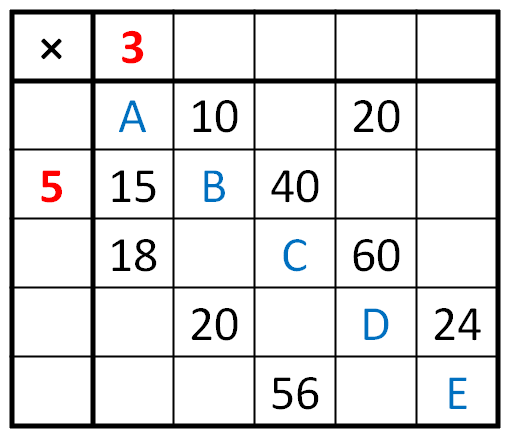 First column: the input number at the top must be a factor of both $15$ and $18$
First column: the input number at the top must be a factor of both $15$ and $18$
So it must be $1$ or $3$
Second row: the input number on the left must be a factor of both $15$ and $40$
So it must be $1$ or $5$
$(1$ or $3)\times(1$ or $5)=15$, so must be $3$ and $5$
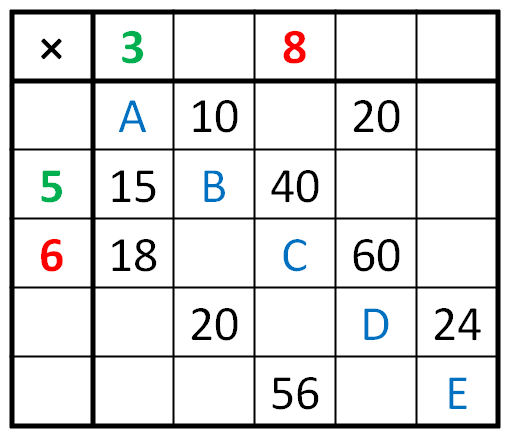
$8\times5=40$ and $6\times3=18$
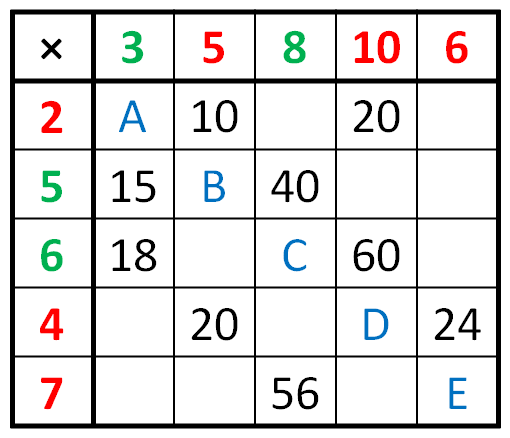
Using the numbers in the grid then allows us to work out more of the input factors in the table
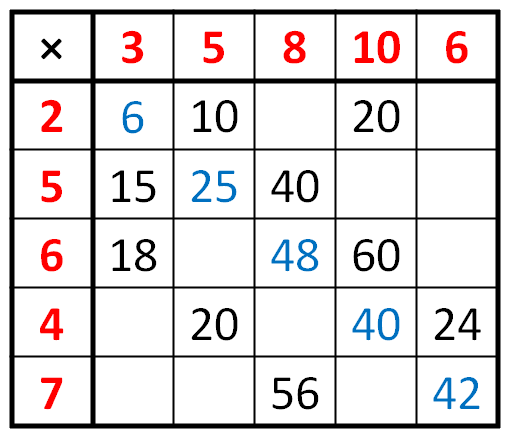
Then, this allows the rest of the table to be filled in, including the values of $A$, $B$, $C$, $D$ and $E$.
Therefore, $A+B+C+D+E = 6+25+48+40+42 = 161$.
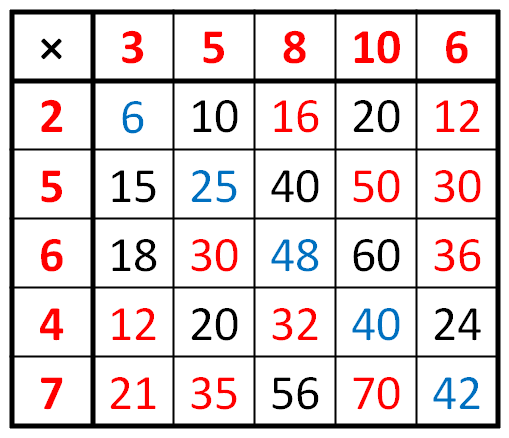
The rest of the numbers can also be filled in:
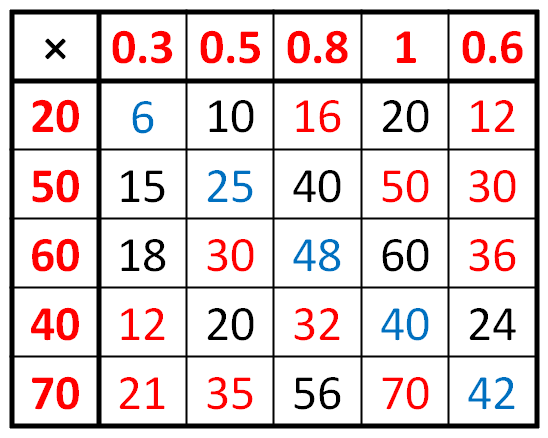 An interesting follow on question is to see what happens when the numbers are not required to be integers.
An interesting follow on question is to see what happens when the numbers are not required to be integers.
The table on the right shows a different way of completing the table if integers are not required. What has changed from the original solution? What has stayed the same?
Will this be the case for all the solutions? Can you explain why?

Or search by topic
Number and algebra
Geometry and measure
Probability and statistics
Working mathematically
Advanced mathematics
For younger learners
Multiplication Table Puzzle
Age 11 to 14
ShortChallenge Level 





- Problem
- Solutions
Answer: 161
 First column: the input number at the top must be a factor of both $15$ and $18$
First column: the input number at the top must be a factor of both $15$ and $18$So it must be $1$ or $3$
Second row: the input number on the left must be a factor of both $15$ and $40$
So it must be $1$ or $5$
$(1$ or $3)\times(1$ or $5)=15$, so must be $3$ and $5$

$8\times5=40$ and $6\times3=18$

Using the numbers in the grid then allows us to work out more of the input factors in the table

Then, this allows the rest of the table to be filled in, including the values of $A$, $B$, $C$, $D$ and $E$.
Therefore, $A+B+C+D+E = 6+25+48+40+42 = 161$.

The rest of the numbers can also be filled in:
 An interesting follow on question is to see what happens when the numbers are not required to be integers.
An interesting follow on question is to see what happens when the numbers are not required to be integers.The table on the right shows a different way of completing the table if integers are not required. What has changed from the original solution? What has stayed the same?
Will this be the case for all the solutions? Can you explain why?
This problem is taken from the UKMT Mathematical Challenges.
You can find more short problems, arranged by curriculum topic, in our short problems collection.
You may also like
Square It
Players take it in turns to choose a dot on the grid. The winner is the first to have four dots that can be joined to form a square.

